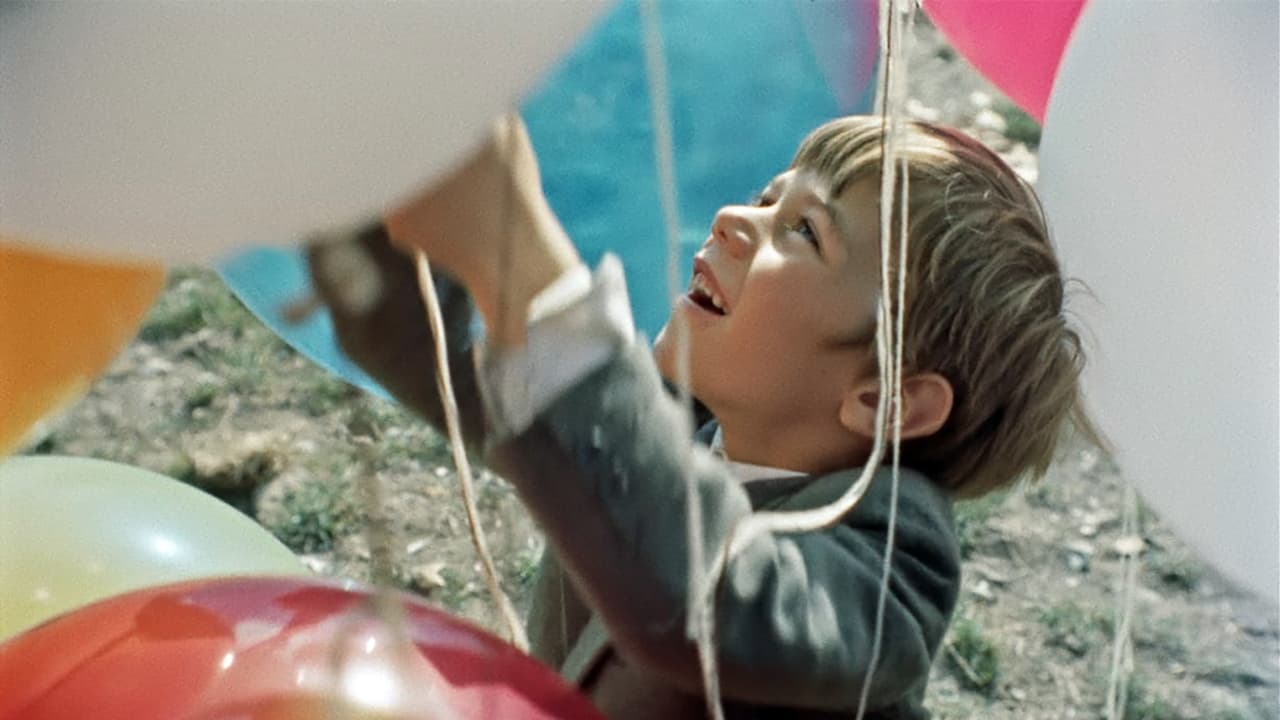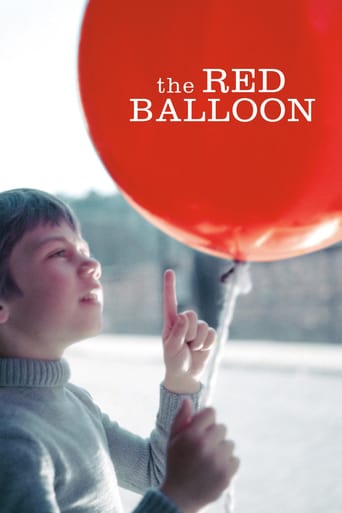Hellen
I like the storyline of this show,it attract me so much
Rijndri
Load of rubbish!!
Dynamixor
The performances transcend the film's tropes, grounding it in characters that feel more complete than this subgenre often produces.
HottWwjdIam
There is just so much movie here. For some it may be too much. But in the same secretly sarcastic way most telemarketers say the phrase, the title of this one is particularly apt.
JamiJR
Every rainy day in elementary school we were subjected to this horror show of a movie. A boy is stalked around Paris by a sentient red balloon. Stupidly, the boy befriends this balloon instead of running away in terror from this unholy object. Even though I was already reading Stephen King and grew up watching horror movies, none of that scared me as much as this terrifying tale of a stalker balloon. The ending is by far the worse when the boy is abducted by all the balloons of Paris and it ends with him flying high in the sky. Leaving one wondering what will happen next. Will a flock of birds fly into the balloons popping them? Or will the balloons abandon the boy and leave him to end up impaled upon the Eiffel Tower? I don't know how anyone can possibly find this movie artistic or charming. It's terrifying and to this day I really, REALLY hate balloons.
Horst in Translation (filmreviews@web.de)
This is an almost 60-year-old live action short film which runs for 35 minutes and won a Screenplay Academy Award, actually the only short film that managed this achievement. It's written and directed by Albert Lamorisse and features two of his kids including his son as the human lead character. The real star of the film is the balloon though. The most memorable thing about this slightly more than half an hour was the contrast between gray Paris and the bright red balloon. Still, I have to say I didn't really see anything unique or particularly memorable in here and I am a bit surprised that this short is so well-received till this day. Basically all we see is a little boy who goes through town with his balloon, occasionally loses it, but gets it back, while a couple other kids and adults try to grab the balloon as well. Maybe he is synonymous with some kind of hope and the metaphor for bringing more brightness into their lives. The ending was pretty spectacular, but in terms of the story I have to say it did not win me over either. The scene I liked the most was probably when the girl with her blue balloon meets the protagonist. This would have made a nice ending too, maybe watching the two leave together with their balloons before the closing credits roll in. Anyway, I was very much underwhelmed by this short movie. Not recommended.
James Hitchcock
"The Red Balloon" ("Le Ballon Rouge") is a well-known short by the French filmmaker Albert Lamorisse. The film, which lasts just over half an hour, tells a simple story with very little dialogue. One day a young boy named Pascal, while on his way to school, finds a red balloon drifting through the streets of Paris. The balloon appears to have a mind of its own and follows Pascal wherever he goes. It even obeys his commands, remaining outside a shop like a well-behaved dog when he tells it (in one of the few lines of dialogue) "Ballon! Attends-moi la!" The film then follows the adventures of Pascal and the balloon throughout the day. A British or American filmmaker would probably have set this story in the well-trodden tourist quarters with plenty of shots of the Eiffel Tower, Arc de Triomphe, Sacre-Coeur and other landmarks. Lamorisse, however, shot it in the working-class Belleville area with no well-known landmarks in sight. In the fifties Belleville was regarded as a slum area, and many of the buildings shown here were demolished as part of a slum clearance programme in the early sixties. The colours, principally greys, browns and dark blues, are mostly sombre; for most of the film the only bright colour is the red of the balloon, except during a brief sequence in which Pascal meets a little girl who has her own bright blue balloon, which also seems to follow her about. With a theme like this, the film would seem to have been aimed at children, and indeed it has always been popular with younger audiences. It has also, however, been popular with adults who have (as is often the way with adults) tried to find deeper meanings in it. The balloon, which drifts not with the wind but wherever it wants to, becomes a symbol of freedom; it may obey Pascal but only does so because it has befriended him. Its colour, red, has traditionally been the colour of socialism and the Left, so there may be a political subtext here. On the other hand, the balloon has also been seen as a Christian symbol. (It is notable that a church is a prominent feature in many scenes). This element is particularly strong in the scene in which a gang of bullies, envious of Pascal's new toy which also serves as his playmate, destroy the balloon with their catapults. In this context the balloon's colour takes on a very different meaning, because red in Christianity is the colour of martyrdom and sacrifice. The film's ending, in which hundreds of other balloons of many different colours lift Pascal high above the city, can therefore have several meanings. It can be an image of the hope which enables us to rise above our surroundings. It can be symbolic of political liberation. Or it can be an allegory of Christian resurrection. Or it can simply be the charming end to a magical children's film with no deeper meaning. Lamorisse has achieved the difficult feat of making a film which can be one thing to children and another to adults. This feat of condensing so much into a short film meant that, despite the sparseness of its dialogue, "The Red Balloon" became the first, and so far only, short to win the Academy Award for Best Writing (Original Screenplay). 8/10
Neddy Merrill
At 34 minutes the term "movie" represents a bit of a stretch for this delightful 1956 classic children's film. Like a Christo's "Gates" abstract art piece from Central Park in 2002, the vibrant red of the balloon is visually striking against the blacks and grays of post-invasion Paris. The relationship between the boy and the balloon, his efforts to protect it from the dangers of the teachers, adults and particularly the other boys makes for a compelling narrative despite the near complete lack of dialog. This combined with an inspiring ending make this a must see (particularly since it takes just a little more time than your average "Hannah Montana" episode.

